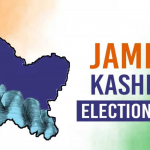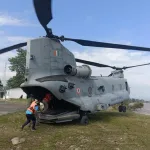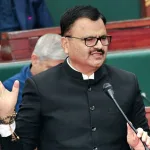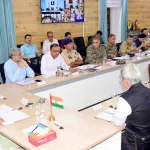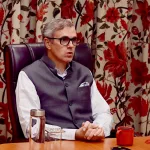Political analysts and keen Jammu and Kashmir watchers are closely keeping an eye on the poll results of the Assembly Elections in Jammu and Kashmir that witnessed an unprecedented participation of the voters to choose the candidates. It was a foregone conclusion that this time the lines have been drawn after the neutralization of Article 370 and 35 A. It created a space for new narrative. That indeed got traction among the masses for the new vistas of development and employment opportunities. But it is also a fact that the conventional traditional local parties that have been active with their politics based on the special status of Jammu and Kashmir have not lost ground. The trends of the exit polls that are emerging show that they have not lost the foothold in Kashmir and are going to make a difference. This will surely affect the political calculus once the verdict is out in the political domain. The trends available in the exit poll market are showing a diversion from the previous voting patterns. In Jammu BJP may be making a significant presence felt but in Kashmir the swing is reverse for the party with the National Conference holding the ground with Congress by its side. There has been a considerable buzz about the “Naya Kashmir” narrative but seems to have not paid the desired dividends in spite of the numerous developmental policies and youth oriented schemes. This needs to be probed by the policy makers. The tightening of the noose on the terror modules has indeed led to the curbs on the stone pelting and other terror related acts in Kashmir but it seems that the votaries of the special status that includes the National Conference, People’s Democratic Party and independents patronized by the secessionists have their pockets intact. This is reflective in the exit poll patterns. The alliance and inclination of the BJP with the Apni Party and People’s Conference to create a new political alternative in Kashmir to pose a front to NC and PDP has not been able to give them the dividends in electoral politics that it intended. It is not that the BJP did not know the political reality of Kashmir but it wanted to bide its time. In the Lok Sabha Elections it left the ground open for its local takers by not fielding any candidates from Kashmir with a hope that it will leave it with maneuverability in the Assembly Elections to play its cards in terms of seeking the alliance partners. Though Jammu may give it some sigh of relief but Kashmir may disappoint it. In such a situation the political permutations and combinations are dicey. It cannot be forgotten that politics is an art of the possible. There are no permanent friends and foes in politics. Not only that. Even hard-core political ideologies have been shelved at times to make strange bedfellows in politics to garner numbers to form the governments. Whether that combination will be stable or unstable is a different thing. BJP and PDP have come together earlier and held hands to form the government in Jammu and Kashmir by drafting the consensual “Agenda of Alliance.” So the things are clear that even if Jammu and Kashmir enters the domain of the hung Assembly there is a probability of many permutations and combinations that will surprise the traditional political thinkers. The die has been cast.
The Die has been Cast in Jammu and Kashmir

Sign Up For Daily Newsletter
Be keep up! Get the latest breaking news delivered straight to your inbox.
By signing up, you agree to our Terms of Use and acknowledge the data practices in our Privacy Policy. You may unsubscribe at any time.
Leave a Comment Leave a Comment
Stay Connected
Latest News
Recent Posts
- IAF deploys helicopters and transport aircraft for flood rescue ops in Jammu and Punjab
- Jal Shakti Department elevates 8 in-charge Superintending Engineers as in-charge Chief Engineers
- LG Manoj Sinha reviews Flood Relief, Rescue Operations in J&K
- We must set clear deadlines for bringing life to normalcy: CM Omar Abdullah
- Flood-like situation emerges in Kashmir Valley after continuous rainfall



